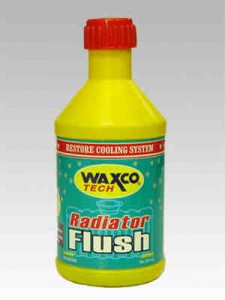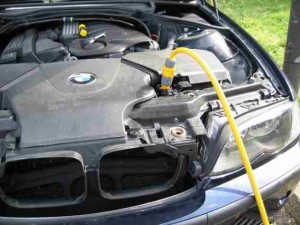Radiator Care and Maintenance: How to Drain Car Engine Cooling System
As promised in part 2 of the series on how to maintain your car’s engine cooling system, here are the simple steps that will show you the proper way on how to drain your radiator and increase engine cooling system performance.
Just a word of precaution: Read the owner’s manual of your car. Different cars have different engines. The coolant and water concentration inside the radiator will depend on a variety of factors, such as ambient temperature, engine type, etc. For the sake of clarity, we will be using a 50:50 ratio of water and coolant, which is a safe number for any type of vehicle.
How to Drain the Car Engine Cooling System
You will need the following:
- Radiator flush (optional)
- Garden hose and water outlet
- Fresh engine coolant (check your owner’s manual for the correct specification of coolant or anti-freeze)
- Distilled water (around 3 to 4 liters depending on the capacity of your radiator)
- Sturdy work gloves
- Pliers
Warning: Be careful when working with a hot engine. It is always best to work with a cool engine.

Step 1: You can flush the radiator before draining the cooling system. This is advisable to older model cars. Flushing the radiator will help to eliminate accumulated rust and debris inside the engine cooling system. It is highly recommended to flush your radiator once a year. Proceed to step 2 if you don’t need to flush the radiator
Park the car in a safe and level area. Pop open the hood. Open the radiator cap and pour 1/4 quarts to 1/2 quarts (approximately 287 ml) of radiator flush inside the radiator. Tighten the radiator cap and start the engine. Let it idle for 5 to 10 minutes. Do not drive the car, just let it idle for a while.
After letting the engine idle, turn off the engine and let it cool for a few minutes. You are now ready to drain the radiator.
Step 2: Put on your safety gloves. Remove the radiator cap and locate the radiator drain plug. The drain plug is located on the lower part of the radiator, either on the left or the right depending on your car. Turn the drain plug counterclockwise to loosen it. Use pliers when needed. Be careful as the gushing liquid will be HOT or WARM to the touch. Remove the drain plug and let the water and coolant mixture drain for 5 to 7 minutes.

Step 3: Use a garden hose to thoroughly flush the inside of the radiator. You can also pour water inside the radiator and let the water drain to eliminate any traces of dirt, debris, and radiator flush inside the radiator. Pouring 2 to 5 liters of water will do the trick.
Step 4: Re-insert the radiator drain plug and tighten fully by turning in a clockwise direction. Pour fresh coolant and distilled water inside the radiator. Distilled water is better than tap water. Distilled water will help to reduce rust and corrosion inside your radiator.
Step 5: It is also a good idea to refill the coolant reservoir with fresh water and coolant. Tighten the radiator cap and start the engine. Look for any leaks that might be caused by a loose drain plug. Re-tighten if necessary.

